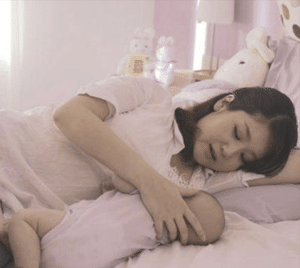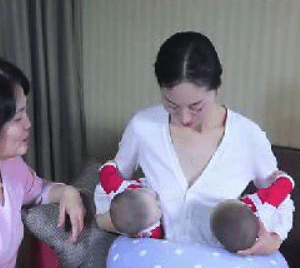 Successful breastfeeding depends on how well baby latches onto mother’s breast. It is essential for your baby to learn to how to latch properly while both mother and baby are still recovering in the hospital. Otherwise, you will experience hard time during your confinement period. Your baby will master the technique if he or she is guided the right way. Therefore, if baby is being introduced to the wrong way of latching, your baby will become used to it and it will be difficult to change his or her habit later. It is understandable that during the first few days, mothers will be experiencing labour pains, postpartum pain from womb contractions and coping with post delivery wounds as well as fatigue. However, the first few days are critical to the success of breastfeeding for new mothers.
Successful breastfeeding depends on how well baby latches onto mother’s breast. It is essential for your baby to learn to how to latch properly while both mother and baby are still recovering in the hospital. Otherwise, you will experience hard time during your confinement period. Your baby will master the technique if he or she is guided the right way. Therefore, if baby is being introduced to the wrong way of latching, your baby will become used to it and it will be difficult to change his or her habit later. It is understandable that during the first few days, mothers will be experiencing labour pains, postpartum pain from womb contractions and coping with post delivery wounds as well as fatigue. However, the first few days are critical to the success of breastfeeding for new mothers.
Tip 1: Before and After Childbirth
- Before delivery, mothers who wish to breastfeed exclusively, should inform the staff of delivery ward your intentions so they can make preparation. They would not feed your baby with formula milk or any supplements.
- After childbirth, the nurse will carry the newborn baby to you for breastfeeding. In the first hour after birth, newborn babies have a strong rooting and sucking reflexes.
- Mothers may want to opt for baby room with you as well so you can put baby to the breast whenever he wake up for feeding. If baby sleeps beyond three and a half to four hours in daytime, it is all right to wake baby for a feed. Drinking more colostrum will stimulate baby to pass out meconium, minimising risks of contracting jaundice. At night, let baby wake you up for feeding instead.

- Many mothers have the misconception that so long baby’s mouth encloses the nipple alone, baby will be able to get the milk. In fact, mothers have to ensure the areola is fully inside baby’s mouth to form a teat which baby compresses with his or her palate and tongue in order to draw out milk. The areola is the small circular area surrounding the nipple. Therefore, it is important to check baby has taken the areola into his or her mouth and he or she is making appropriate sucking movements. Good attachment also minimises problems such as sore and cracked nipples, which can lead to engorgement and insufficient milk supply.
- Mothers should not neglect learning the correct positioning of baby such as cradle hold, cross cradle hold, football hold, side lying position, ‘C’ hold on breast or ‘U’ hold on breast. Whichever position is adopted, the most important thing for mothers is to be comfortable and relaxed.
- For mothers who have undergone a Caesarean section, your wound may hurt too much to sit up. Instead, lie on your side and have a nurse or your husband to position the baby properly.
- Never lean over the baby. The correct way is for baby to be brought to your breast, and not your breast to the baby. Always make sure baby’s head is tilted in a way that his or her chin touches your breast and ensuring his or her nose is unobstructed.
- Let baby suckle for as long as he or she wants to. Baby may unlatch once he or she had enough.
- Supply meets demand is the main principle of breastfeeding.
- For first feed, do not be anxious if there is no let down sensation or there is only a few drops of thick substance oozes out. The first milk is colostrum which is rich in proteins, antibodies, immunoglobulins, vitamins and minerals. Babies do not need to drink a lot of milk on their first 2 days. This small amount of milk is sufficient to meet baby’s requirements.
- Otherwise, the more the baby suckles, the more milk mother should produce. It is safe to allow baby to suckle whenever he demands after the 2nd day as babies experience hunger and become more awake from third day onwards. Therefore, it is normal for them to demand milk hourly for a few hours.
- If your confinement nanny say there is not enough breast milk, it is advisable to see your lactation consultant for a proper counselling on latching in the hospital.

